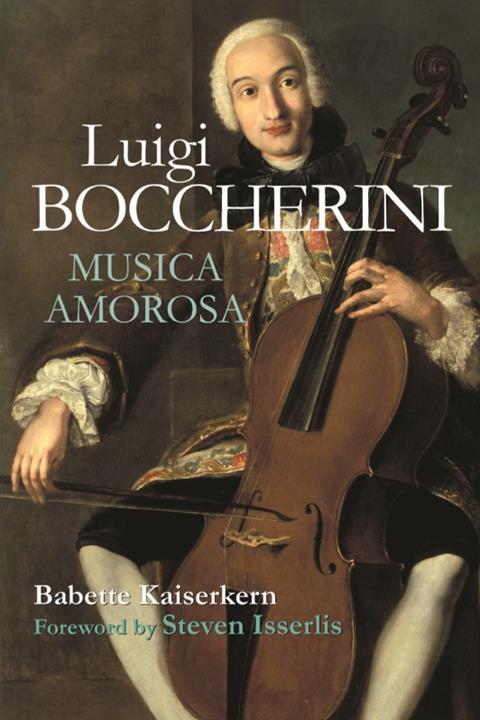Robin Stowell reviews Babette Kaiserkern’s treatise on the Baroque composer’s life and works, translated into English for the first time

Luigi Boccherini: Musica Amorosa
Babette Kaiserkern
English translation by Rhona Brose
284PP ISBN 9780995757462
KAHN & AVERILL £40
After several years of comparative neglect, Luigi Boccherini’s significant contribution to late 18th-century culture has gradually gained recognition since the late 1980s, due to the critical studies of, among others, Luigi della Croce, Remigio Coli, Ramón Barce, Jaime Tortella, Marco Mangani and Elisabeth Le Guin. Originally published in German (2014), Babette Kaiserkern’s biography espouses most of the outcomes of those studies and its appearance in translation makes it the first major work about Boccherini to be published in English since Andreas Mayor’s 1965 translation of Germaine de Rothschild’s Luigi Boccherini: Sa vie, son oeuvre (1962).
Kaiserkern sets out her stall in 15 chapters, many of which are given structural clarity through headed subdivisions. Her introduction assesses 18th-century opinion of Boccherini’s music, his significant role in the promotion of the cello and the recent revival of interest in his work. She then reviews Boccherini’s early years in Lucca, his cello studies in Rome and his experiences of other principal Italian and European centres before considering his cello sonatas and concertos, their sources, content and style, modern arrangements and various performance issues. His further travels are then examined, along with his sponsorship by Baron de Bagge and his important role as cellist, with violinists Nardini and Manfredini and violist Cambini, in the Quartetto Toscana. Examination of his duets, string trios and string quartets follows, the latter works tending to have been overshadowed by his 125 string quintets for various instrumental combinations, discussed in Chapter 7 along with his sextets and flute quintets.
Boccherini lived in Spain between 1768 and 1805, mostly in Madrid and its environs. The positives and negatives of his patronage there are explained, including his improved financial position, from 1770, as composer, music director and cellist to the Infante Luis de Borbón, his marriage and the raising of his six surviving children; but the death of his wife in 1785 and Luis’s demise shortly afterwards exposed his vulnerability as a musician isolated from the ‘real’ musical world. He eventually secured more sponsorship, earning a general pension from Carlos III and serving both the Prussian Crown Prince, Frederick William, as chamber composer and the Countess–Duchess of Benavente-Osuna as concertmaster and composer.
Kaiserkern’s discussion of Boccherini’s c.30 symphonies slots neatly into place here, before her consideration of ‘The Final Years’, in which Boccherini had to become more independent and commercially minded. He pandered to Spanish taste, composing his guitar quintets, which appeared alongside pioneering piano quintets, and he added to his vocal works, notably his Villancicos, the zarzuela Clementina and the second version of his Stabat Mater.
Kaiserkern’s wide-ranging academic background in literature and cultural history at times hinders the flow of her musical narrative – for example, her dalliances with Goya’s paintings and Frederick II’s life and loves – and her discussion of the works, pitched towards an educated general readership, often remains light on substantive analytical insight. Moreover, the book hangs heavy towards its conclusion with a chapter on Boccherini’s few surviving letters that seems poorly integrated into the narrative and two chapters which might with advantage have been combined into one shorter, more concise evaluation of Boccherini’s legacy and reputation. Errors, though, are few and Rhona Brose deserves much credit for the clarity, fidelity and fluency of her translation. Kaiserkern’s monograph is enriched by 68 illustrations of paintings, letters, notes and scores from various archives. It incorporates a minimalistic index of names and places, a brief bibliography, and a useful worklist and chronology of significant events in Boccherini’s career. Nevertheless it offers a fairly balanced, eloquent and readable reassessment of the life, milieu and oeuvre of one of the late 18th century’s most original composers during a period of turbulent change.
ROBIN STOWELL



































No comments yet